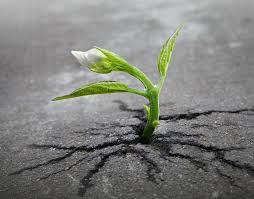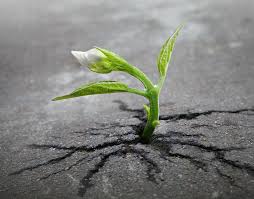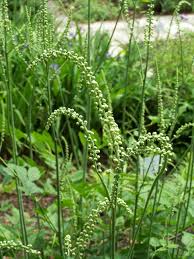
In a recent editorial, page 467, reference is made to a suggestion that the fresh or recent medicine is the best, since it “contains the life of the plant; that the dried drug stock is dead,” etc.
About the year 1870 the writer made up a quantity of the green root of the wild indigo, fresh drug, and washed into a tincture as follows: The root was mashed into a pulp in an iron mortar. Tho one pound of the pulp a pint of alcohol was added in a salt-mouth jar and allowed to macerate in a warm place about two weeks. The liquid was ten expressed, and was found to be quite dark in color, and in taste quite unlike the fluid extract, so it did not impress me as being of much value.
Not long after there was an epidemic of typhoid dysentery, and many deaths from it occurred among children. A large number of cases came into my charge, and in one family three children a girl aged eight and two boys aged four and six years. All three got sick the same day, and showed great malignancy from the start. They had terrible diarrhoea that could not be checked by any medicines I used. After the expiration of about twenty-one days all became reduced to mere skeletons, the evacuations still being very frequent, and had become dark purple in color, and extremely fetid. A strong cadaveric odor arose from each one, and it was evident that they were about to die. The father, who was quite wealthy, had a large family of girls, but the little boys were very near to his heart, and his special pride. So when their lives became endangered, he sent for all the doctors in reach for counsel. All decided that the boys must die, and the girl also, and agreed that the only thing that could be done was to give whisky and quinine. This we gave for a few hours, when I saw that each one was sinking and the pulse steadily rising, although each dose of whisky and quinine caused the pulse to come down a little. About 9 P.M. I told the father that all hope seemed to be gone, but that I had one more medicine that I had not tried that might turn the tide. He told me to do as I thought best, so I ran all the way to my office one – half mile – for the tincture green root of the Baptisia. I gave to each nearly a teaspoonful, and awaited results. In a few minutes great drops of sweat appeared upon their foreheads, and they sweated from head to foot powerfully. The dose was repeated in an hour or two and in a little while the diarrhoea was checked, the cadaveric odor vanished, and the dying children were rescued from what seemed certain death. They took no other medicine, and each made a perfect recovery.
Meanwhile, several other members’ of the family took the disease, as well as several neighbors, and also myself. A few dose of the Baptisia checked it, and in a few days the disease was completely stamped out, including all the other cases I had; and it was all done by the one remedy – Baptisia.
More extended notes of this epidemic, and the, cases here referred to, were published in this journal at the time. (About the year 1871, I think.) In a long practice I have never seen such remarkable results follow the use of any medicine as from the green tincture of Baptisia in the above children. There they lay, two upon a bed, the baby boy near by upon a cot, and deaths were not only very near, but would not be an hour apart; yet this wonderful medicine saved them after all else had failed, as if by magic! Would the fluid extract of the dried root have accomplished the same result? I do not believe it would.
Since-coming to this place in 1872, I have used only the fluid extract of the root dried or partially dried, as I could not gey the green root tincture, and I never could see that it did much good in typhoid fever, diphtheria, or other infectious disease, in which I used it. Instead, in many cases at least, it causes an irritation of the stomach and bowels, and I had to suspend its use.
Recently I have been using a Homoeopathic tincture made no doubt the same as that I made in 1870. This tincture possessed active virtues, and proved of decided advantage in the treatment of several cases of typhoid fever, and in one case of diphtheria in which there were where vomiting and irritation of the bowels. I noted especially that it did not cause dryness of the tongue, as I had often known the fluid extract to do. My experience, therefore, proves that only the green tincture is of great value, which, if true, may indicate that the green tincture contains elements – perhaps the life of the plant principle – that a fluid extract of the dried root does not.
A year ago I made up several tinctures from the green roots of plants, among them Blue cohosh and Cranes bill. In a case of an abortion at three months the placenta was retained, and could not be reached without going into the womb with instruments, which I decided not to do, but instead gave the green tincture blue cohosh. There was more or less haemorrhage for a week, at the end of which time pains came on, and the after-birth was safely discharged.
One of my late cases of typhoid fever was a weak, delicate woman, who had a pulse of 90 to 95, and severe constipation of the bowels for six months before the attack. There was much trouble to get the bowels to act by the use of thee Elm enema, and we had to give several doses of Castor oil. Her tongue became very dry, and at the end of two weeks she had a hemorrhage of blood from the bowels. I gave oil Erigeron and tincture of Cinnamon. In a few hours there was a second haemorrhage, and the next day a third and more severe one that continued until I arrived. I then gave half a teaspoonful every two hours of the green tincture Cranes bill, The Elm enemas were suspended for a few days, and then resumed, the patient making a slow but good recovery. The inference was that the green tincture Geranium was more powerful than the tincture Cinnamon and oil of Erigeron. The subsequent use of the green tincture in that and other cases proved that it did not tend to cause irritation of the stomach or bowels, or dryness of the tongue.
Every Eclectic physician has used the green tincture Gelsemium, and knows of its superior value. It has been prepared for years from the green root and pure Alcohol, without being dried a particle, and has become a standard preparation. No fluid extract or tincture of the dried root I have ever used can compare with it in efficacy in my experience.
What, then, does the root lose in drying that causes the difference in results? Is it some undiscovered volatile principle, or the life or spirit of the plant which? I leave that to other physicians to answer. With our present knowledge it may not be possible to answer truly. But that does not matter so much to the physician as the fact that the green tinctures of a large number of our indigenous medicines are the best and most elegant preparations that can be made.
1. They are all readily miscible with water in any proportion.
2. They make clear, permanent and beautifully colored preparations,
3. Many of them, like Peppermint, Penny royal, Wood betony, Virginia snake-root, etc., make excellent infusions or teas when added to hot water, and are very useful and grateful to many patients in the eruptive fevers, colds, intestinal troubles, etc.
4. They may be prepared, with very few exceptions, of very succulent plants or roots, by adding more or less pure Alcohol, so as to represent minim for grain of the green drug, and further concentration we do not want.- Dr. G.L. Tinker, New Philadelphia, O., in Eclectic Medical Journal.




